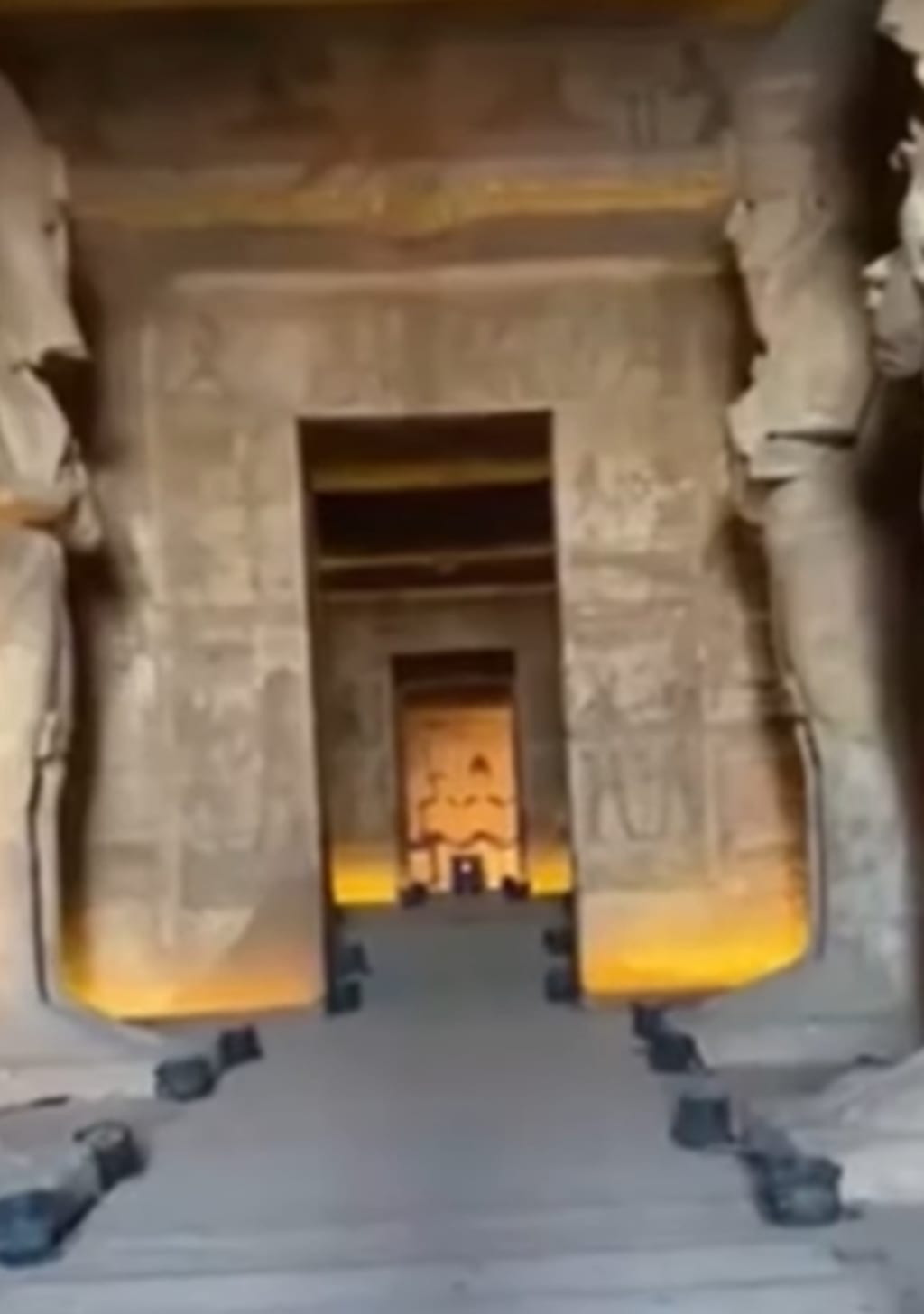Abu symbel temple Egypt
The larger of the two tabernacles, frequently appertained to as the Great Temple, is devoted to Ramesses II himself. The facade is adorned with four colossal statues of the caesar, each standing about 20 measures( 66 bases) high. These statues are seated on thrones and depict Ramesses in a calm, serene posture, embodying his godly nature and authority. Between the legs of these jumbos are lower statues representing members of his family, including his principal woman

The Abu Simbel tabernacles in Egypt are among the most emotional monuments of the ancient world. Sculpted into the mountainside during the reign of Pharaoh Ramesses II in the 13th century BCE, these tabernacles serve not only as a testament to the architectural and engineering prowess of ancient Egypt but also as symbols of the caesar's godly power and his achievements. Located in Nubia, near the ultramodern border with Sudan, the Abu Simbel tabernacles have a fascinating history that spans from their original construction to their ultramodern- day relocation to save them from the rising waters of Lake Nasser.
literal environment and Construction Ramesses II, frequently regarded as one of Egypt's topmost dictators, ruled from 1279 to 1213 BCE. His reign is noted for its military juggernauts, expansive structure systems, and the establishment of Egypt as a major power in the ancient world. The construction of the Abu Simbel tabernacles began around 1264 BCE and took roughly 20 times to complete. These tabernacles were devoted to the gods Amun, Ra- Horakhty, and Ptah, as well as to Ramesses himself. The choice of position was strategic, as it lay on the southern border of Egypt, serving both as a important symbol of Egyptian dominance over Nubia and as a warning to implicit raiders.
The larger of the two tabernacles, frequently appertained to as the Great Temple, is devoted to Ramesses II himself. The facade is adorned with four colossal statues of the caesar, each standing about 20 measures( 66 bases) high. These statues are seated on thrones and depict Ramesses in a calm, serene posture, embodying his godly nature and authority. Between the legs of these jumbos are lower statues representing members of his family, including his principal woman
, Nefertari, and some of his children. The innards of the Great Temple is inversely emotional. The hypostyle hall, supported by massive pillars shaped like Ramesses, leads to a series of chambers climaxing in the sanctuary. In the sanctuary, statues of Ramesses and the three gods to whom the tabernacle is devoted sit side by side. The alignment of the tabernacle is similar that, on two specific days of the time, the sun's shafts access the tabernacle to illuminate these statues. This solar miracle occurs on February 22 and October 22, dates believed to correspond to the caesar's birthday and coronation, independently. conterminous to the Great Temple is the lower tabernacle devoted to Nefertari, Ramesses' principal woman
. This tabernacle is devoted to the goddess Hathor and Nefertari herself, a rare honor reflecting her significant status. The facade features six statues, four of Ramesses and two of Nefertari, all standing about 10 measures( 33 bases) high. The interior is also adorned with elaborate busts and oils depicting the queen and the goddess Hathor. Relocation and Preservation The ultramodern history of the Abu Simbel tabernacles is as fascinating as their ancient history. In the 1960s, the construction of the Aswan High Dam posed a significant trouble to these monuments.
The creation of Lake Nasser, a massive artificial force, meant that the tabernacles would be submerged under water. Feting the literal and artistic significance of these tabernacles, an transnational crusade led by UNESCO was launched to save them. From 1964 to 1968, an ambitious and unknown engineering design took place. The tabernacles were precisely cut into large blocks, importing up to 30 tons each, and also reassembled on advanced ground, about 65 measures( 213 bases) above their original position and 200 measures( 656 bases) down from the swash.
This relocation design not only saved the tabernacles but also assured that the solar alignment miracle was maintained. The success of this design is frequently cited as one of the topmost achievements in the field of archaeological conservation. Significance and heritage The Abu Simbel tabernacles aren't only architectural masterpieces but also hold deep artistic and literal significance. They emblematize the majesty of Ramesses II's reign and his devotion to the gods.
The tabernacles also reflect the ancient Egyptians' advanced understanding of art, armature, and astronomy. also, the relocation of the Abu Simbel tabernacles stands as a remarkable illustration of transnational cooperation in the field of heritage preservation. It set a precedent for unborn sweats to save exposed monuments around the world and stressed the significance of conserving artistic heritage for unborn generations. moment, Abu Simbel remains one of Egypt's top sightseer lodestones , drawing callers from each over the world. The admiration- inspiring scale of the tabernacles, combined with their rich history and the story of their deliverance, continues to allure and inspire people. As a UNESCO World Heritage point, Abu Simbel is defended and celebrated as a symbol of mortal achievement and adaptability, icing that its heritage endures for generations to come.
In conclusion, the Abu Simbel tabernacles are a testament to the imagination and cultural excellence of ancient Egypt, as well as a important memorial of the significance of conserving our global heritage. From their construction under Ramesses II to their relocation in the 20th century, these tabernacles synopsize a rich history that continues to reverberate with people around the world.
About the Creator
Enjoyed the story? Support the Creator.
Subscribe for free to receive all their stories in your feed. You could also pledge your support or give them a one-off tip, letting them know you appreciate their work.





Comments
There are no comments for this story
Be the first to respond and start the conversation.